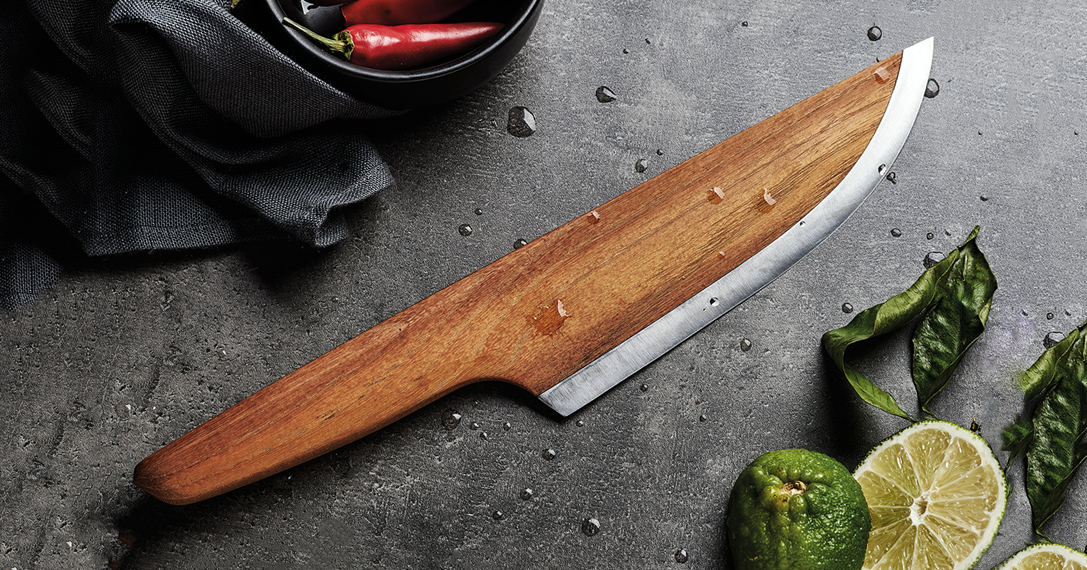Whether you are an amateur or an accomplished chef, there’s nothing like one size fits all when it comes to knives. Any great cook knows that each blade has a specific feel on the hand, and the size, weight, function, and comfort are specifically suited to you. Having a perfect set of knives will set you up for success. Whether I’m trying to make a simple salad or going all in by making a five-course meal for my small family dinner, I need to have just the right knife to ensure everything I chop comes out as desired. The following are a few affordable knives I recently purchased while doing an upgrade for my kitchen. Suffice to say, they have greatly improved my experience in the kitchen.
A Honing Steel
It’s not a knife, but I wouldn’t fail to mention its importance in a knife collection. A blunt knife is one of the most dangerous tools one can have in the kitchen. Therefore, I decided to throw the steel in my shopping cart before choosing the knives I wanted. I use it to keep all my knives at peak sharpness every time I use them.
A Chef’s Knife
There are many different types of kitchen knives available, but I must say that the chef’s knife stands out as one of the finest options. I personally recommend a size ranging from eight to 10 inches, although it may initially feel slightly longer and unfamiliar to handle. However, once you get accustomed to it, you’ll find it highly efficient. This versatile knife serves me well for approximately 90% of my chopping and dicing needs in the kitchen. When purchasing a chef’s knife, I received advice to opt for a full-tang blade, as it offers better balance and durability compared to the half-stud model.
A Paring Knife
I have a paring knife that is about 3.5 inches long. I learned it would be great for preparing foods that need a lot of attention during preparation. I find it easy to use when mincing small ingredients such as chopping garlic and peeling certain fruits and vegetables. However, the paring knife is not suitable for chopping hard vegetables like carrots and parsnips. It does not have enough weight to cut through these foods. I learned the hard way that one can get badly injured using knives the wrong way.
A Serrated Knife
Also known as a bread knife, a serrated knife is commonly used for slicing loaves. The serrations on the blade allow for a sawing motion, ensuring clean and precise cuts through the crust while maintaining a soft interior. When it comes to serrated knives, brands like Global Knives are well-regarded for their quality and performance. That being said, I learned that I could use the knife on almost any slicing and dicing job that a chef’s knife can do. I have a six-inch for my kitchen, and I find it exceptionally useful when cutting pineapples, citrus fruits, peppers, and tomatoes. I also use the knife to slice up my dessert cake, and impressively it does not crumble. I recently discovered that I should use serrated knives for slicing and not chopping ingredients. One should use a sawing motion for a perfect grip and cut on the foods.
A Boning Knife
As its name implies, the boning knife is used to cut up or bone a fish, poultry, meat, pork, etc. Boning knives are designed to cut in straight lines. A chef friend told me that I should use a boning knife to cut along and around the bones and never cut through bones. I recently used my boning knife to debone a turkey, and I have to admit it was pretty easy to separate the meat from the bones as well as slicing through the joints.
A Utility Knife
This is an all-purpose knife blade I have for my kitchen. Its size is somewhere between a paring and a chef’s knife. I bought a five-inch long one. It is super helpful when it comes to dicing vegetables such as carrots, celery roots, and other hard vegetables. I purchased mine in a serrated style, although there are also straight ones. It all depends on your preferred type.
A Santoku Knife
This knife is made with a textured blade and what I love about it is that food does not stick to it when I am slicing. I find it perfect when I am cutting ingredients such as onions, garlic, and tomatoes because they don’t stick on the knife. I don’t have to keep touching the ingredients, for example, garlic, which leaves a lingering scent on my fingers for days.
